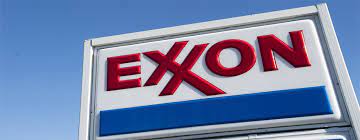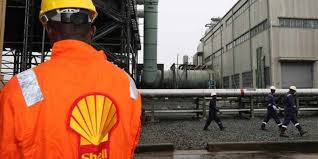Oil & Energy
‘Exxon’s Falling Production, Highly Bullish For Oil Prices’

Last week, ExxonMobil (NYSE:XOM) reported Q 2 2021 earnings in one of big oil’s most anticipated scorecards this earnings season. The United States’ largest oil and gas company posted stellar earnings that proved that the worst for the U.S. shale industry might finally be in the rear view mirror. Exxon’s Q2 earnings swung to a $4.7billion profit from a loss $1.1billion in the year-earlier quarter while revenues more than doubled to $67.7billion (+107.7 percent Y/Y), with both metrics exceeding Wall Street’s expectations.
Exxon said that its impressive earnings were driven by strong oil and natural gas demand as well as the best-ever quarterly chemical and lubricants contributions.
The company was able to achieve those results despite declining production: Q2 overall production slipped 2% Y/Y to 3.6million boe/day, despite production volumes in the Permian Basin jumping 34% Y/Y to 400K boe/day.
Exxon’s Q2 production clip marks the lowest level since the 1999 merger that created the oil and gas giant that we know today.
Meanwhile, H1 Capex clocked in at $6.9 billion, with full-year spending expected to come in at the lower end of its $16billion-$19billion guidance range.
Exxon says cash flow from operating activities of $9.7 billion was the highest in nearly three years and sufficient to cover capital investments, dividends, and pay down debt.
But persnickety shareholders appear unimpressed and have been bidding down XOM shares after the company failed to announce any share buyback program.
Whereas Chevron (NYSE:CVX), Shell (NYSE:RDS.A),and TotalEnergies (NYSE:TTE) all have announced a return to stock buybacks during the current earnings season, Exxon has opted to pay down debt rather than reward shareholders. Exxon suspended buybacks in 2016 as it went on one of the most aggressive shale expansions, particularly in the Permian.
WSJ Heard On The Street’s Jinjoo Lee says Exxon has less flexibility than its peers, thanks to years of overspending followed by a brutal 2020. This has left the company in a vulnerable position, and now Exxon has little choice but to lower its debt levels which have recently hit record highs.
CEO Darren Woods, has reassured investors that reinstating buybacks is “on the table,” though he has reiterated that “restoring the strength of our balance sheet, returning debt to levels consistent with a strong double-A rating” remains a top priority.
But overall, Exxon’s declining production is the way to go in this environment.
Energy finance analyst at IEEFA, Clark Williams-Derry,a non-profit organisation and Kathy Hipple, has told CNBC that there’s a “tremendous degree” of investor skepticism regarding the business models of oil and gas firms, thanks to the deepening climate crisis and the urgent need to pivot away from fossil fuels. Indeed, Williams-Derry says the market kind of likes it when oil companies shrink and aren’t going all out into new production but instead use the extra cash generated from improved commodity prices to pay down debt and reward investors.
Investors have been watching Exxon closely after the company lost three board seats to Engine No. 1, an activist hedge, in a stunning proxy campaign a few months ago. Engine No. 1 told the Financial Times that Exxon will need to cut fossil fuel production for the company to position itself for long-term success. “What we’re saying is, plan for a world where maybe the world doesn’t need your barrels,” Engine No.1 leader Charlie Penner told FT.
Better still, Exxon has been quickly ramping up production in the Permian, where it’s targeting a production clip of 1 million barrels per day at costs of as low as $15 per barrel, a level only seen in the giant oil fields of the Middle East. Exxon reported that production volumes in the Permian Basin jumped 34% Y/Y to 400K boe/day, and could hit its 1 million b/d target in less than five years.
After years of under performance amid weak earnings, the U.S. shale sector remains on track for one of its best years ever.
According to Rystad Energy, the U.S. shale industry is on course to set a significant milestone in 2021, with U.S. shale producers on track for a record-high hydrocarbon revenue of $195 billion before factoring in hedges in 2021 if WTI futures continue their strong run and average at $60 per barrel this year and natural gas and NGL prices remain steady. The previous record for pre-hedge revenues was $191 billion set in 2019.
Rystad Energy says that cash flows are likely to remain healthy due to another critical line item failing to keep up: Capital expenditure.
Shale drillers have a history of matching their capital spending to the strength of oil and gas prices. However, Big Oil is ditching the old playbook this time around.
Rystad says that whereas hydrocarbon sales, cash from operations, and EBITDA for tight oil producers are all likely to test new record highs if WTI averages at least $60 per barrel this year, capital expenditure will only see muted growth as many producers remain committed to maintaining operational discipline.
For years, ExxonMobil has been one of the most aggressive shale drillers with massive spending and capex. Luckily, the company is no longer too keen on maintaining that tag, which is bullish for the U.S. shale sector.
There are already growing fears that a full return of U.S. shale due to improved commodity prices could muddy the waters for everyone
According to an analysis by the authoritative Oxford Institute for Energy Studies, rising oil prices could allow for a significant return of US shale to the market in 2022, potentially upsetting the delicate re-balancing of the global oil market.
“As we enter 2022, the US shale response becomes a major source of uncertainty amid an uneven recovery across shale plays and players alike. As in previous cycles, US shale will remain a key factor shaping market outcomes,” Institute Director Bassam Fattouh and analyst Andre as Economist have said.
Obviously, many investors would prefer that this happens later rather than sooner and so far, indications are that this is the most likely trajectory.
By: Alex Kimani
Kimani writes for Oilprice.com
Oil & Energy
Nigeria Loses More Crude Oil Than Some OPEC Members – Nwoko

Nigeria’s losses due to crude oil theft has been said to be more significant than those of some other members of the Organisation of Petroleum Exporting Countries(OPEC).
The Chairman, Senate Ad- hoc Committee on Crude Oil Theft, Senator Ned Nwoko, made this known in an interview with newsmen in Abuja.
Nwoko noted with dismay the detrimental impact of the issue, which, he said include economic damage, environmental destruction, and its impact on host communities.
According to him, the theft was not only weakening the Naira, but also depriving the nation of vital revenue needed for infrastructure, healthcare, education and social development.
The Senator representing Delta North Senatorial District described the scale of the theft as staggering, with reports indicating losses of over 200,000 barrels per day.
Nwoko disclosed that the ad hoc committee on Crude Oil Theft, which he chairs, recently had a two-day public hearing on the rampant theft of crude oil through illegal bunkering, pipeline vandalism, and the systemic gaps in the regulation and surveillance of the nation’s petroleum resources.
According to him, the public hearing was a pivotal step in addressing one of the most pressing challenges facing the nation.
‘’Nigeria loses billions of dollars annually to crude oil theft. This is severely undermining our economy, weakening the Naira and depriving the nation of vital revenue needed for infrastructure, healthcare, education, and social development.
‘’The scale of this theft is staggering, with reports indicating losses of over 200,000 barrels per day more than some OPEC member nations produce.
‘’This criminal enterprise fuels corruption, funds illegal activities and devastates our environment through spills and pollution.
‘’The public hearing was not just another talk shop; it was a decisive platform to uncover the root causes of crude oil theft, bunkering and pipeline vandalism.
‘’It was a platform to evaluate the effectiveness of existing surveillance, monitoring, and enforcement mechanisms; Identify regulatory and legislative gaps that enable these crimes to thrive.
‘’It was also to engage stakeholders, security agencies, host communities, oil companies, regulators, and experts to proffer actionable solutions; and strengthen legal frameworks to ensure stricter penalties and more efficient prosecution of offenders”, he said.
Nwoko noted that Nigeria’s survival depended
Oil & Energy
Tap Into Offshore Oil, Gas Opportunities, SNEPCO Urges Companies

Shell Nigeria Exploration and Production Company Ltd. (SNEPCo) has called on Nigerian companies to position themselves strategically to take full advantage of the growing opportunities in upcoming offshore and shallow water oil and gas projects.
The Managing Director, SNEPCO, Ronald Adams, made the call at the 5th Nigerian Oil and Gas Opportunity Fair (NOGOF) Conference, held in Yenagoa, Bayelsa State, last Thursday.
Adams highlighted the major projects, including Bonga Southwest Aparo, Bonga North, and the Bonga Main Life Extension, as key areas where Nigerian businesses can grow their capacity and increase their involvement.
“Shell Nigeria Exploration and Production Company Ltd. (SNEPCo) says Nigerian companies have a lot to benefit if they are prepared to take advantage of more opportunities in its offshore and shallow water oil and gas projects.
“Projects such as Bonga Southwest Aparo, Bonga North and Bonga Main Life Extension could grow Nigerian businesses and improve their expertise if they applied themselves seriously to executing higher value contracts”, Adams stated.
Adams noted that SNEPCo pioneered Nigeria’s deepwater oil exploration with the Bonga development and has since played a key role in growing local industry capacity.
He emphasized that Nigerian businesses could expand in key areas like logistics, drilling, and the construction of vital equipment such as subsea systems, mooring units, and gas processing facilities.
The SNEPCO boss explained that since production began at the Bonga field in 2005, SNEPCo has worked closely with Nigerian contractors to build systems and develop a skilled workforce capable of delivering projects safely, on time, and within budget both in Nigeria and across West Africa.
According to him, this long-term support has enabled local firms to take on key roles in managing the Bonga Floating, Production, Storage and Offloading (FPSO) vessel, which reached a major milestone by producing its one-billion barrel of oil on February 3, 2023.
Oil & Energy
Administrator Assures Community Of Improved Power Supply

The Emohua Local Government Area Administrator, Franklin Ajinwo, has pledged to improve electricity distribution in Oduoha Ogbakiri and its environs.
Ajinwo made the pledge recently while playing host in a courtesy visit to the Oduoha Ogbakiri Wezina Council of Chiefs, in his office in Rumuakunde.
He stated that arrangements are underway to enhance available power, reduce frequent outages, and promote steady electricity supply.
The move, he said, was aimed at boosting small and medium-scale businesses in the area.
“The essence of power is not just to have light at night. It’s for those who can use it to enhance their businesses”, he said.
The Administrator, who commended the peaceful nature of Ogbakiri people, urged the Chiefs to continue in promoting peace and stability, saying “meaningful development can only thrive in a peaceful environment”.
He also charged the Chiefs to protect existing infrastructure while promising to address the challenges faced by the community.
Earlier, the Oduoha Ogbakiri Wezina Council of Chiefs, led by HRH Eze Goodluck Mekwa Eleni Ekenta XV, expressed gratitude to the Administrator over his appointment and pledged their support to his administration.
The chiefs highlighted challenges facing the community to include incessant power outage, need for new transformers, and the completion of Community Secondary School, Oduoha.
The visit underscored the community’s expectations from the LGA administration.
With Ajinwo’s assurance of enhancing electricity distribution and promoting development, the people of Oduoha Ogbakiri said they look forward to a brighter future.
By: King Onunwor

